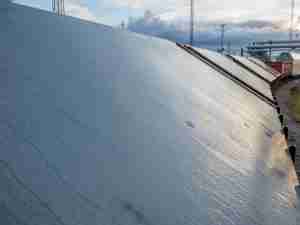Saudis Plan Unprecedented Subsidy Cuts to Counter Oil Plunge
By: Vivian Nereim, Ahmed Feteha and Nafeesa Syeed | Dec 29 2015 at 03:57 AM | International Trade
Confronting a drop in oil prices and mounting regional turmoil, Saudi Arabia reduced energy subsidies and allocated the biggest part of government spending in next year’s budget to defense and security.
Authorities announced increases to the prices of fuel, electricity and water as part of a plan to restructure subsidies within five years. The government intends to cut spending next year and gradually privatize some state-owned entities and introduce value-added taxation as well as a levy on tobacco.
The biggest shake-up of Saudi economic policy in recent history coincides with growing regional unrest, including a war in Yemen, where a Saudi-led coalition is battling pro-Iranian Shiite rebels. In attempting to reduce its reliance on oil, the kingdom is seeking to put an end to the population’s dependence on government handouts, a move that political analysts had considered risky after the 2011 revolts that swept parts of the Middle East.
“This is the beginning of the end of the era of free money,” said Ghanem Nuseibeh, founder of London-based consulting firm Cornerstone Global Associates. “Saudi society will have to get used to a new way of working with the government. This is a wake-up call for both Saudi society and the government that things are changing.”
Swift Changes
This is the first budget under King Salman, who ascended to the throne in January, and for an economic council dominated by his increasingly powerful son, Deputy Crown Prince Mohammed bin Salman. In its first months in power, the new administration brought swift change to the traditionally slow-moving kingdom, overhauling the cabinet, merging ministries and realigning the royal succession.
The new measures are the beginning of a “big program that the economic council will launch,” Economy and Planning Minister Adel Fakeih told reporters in Riyadh. The subsidy cuts won’t have a “large effect” on people with low or middle income, he said.
The benchmark Tadawul All Share Index dropped 2.9 percent at 11:49 a.m. in Riyadh, extending its losses this year to 18.5 percent.
Bond Sales
The collapse in oil prices has slashed government revenue, forcing officials to draw on reserves and issue bonds for the first time in nearly a decade. The government recorded a budget deficit of 367 billion riyals ($98 billion) in 2015. That’s about 16 percent of gross domestic product, according to the National Bank of Abu Dhabi, but below the 20 percent forecast by the International Monetary Fund.
For 2016, the government expects the deficit to narrow to 326 billion riyals. Spending, which reached 975 billion riyals this year, is projected to drop to 840 billion riyals. Revenue is forecast to decline to 513.8 billion riyals from 608 billion riyals.
Foreign Reserves
Oil made up 73 percent of this year’s revenue, according to the Finance Ministry. Non-oil income rose 29 percent to 163.5 billion riyals.
Brent crude prices have plunged more than 35 percent over the past year, straining the public finances of producers from Venezuela to Iraq. The foreign reserve assets of the Saudi central bank dropped more than $95 billion in the first 11 months of this year to $627.7 billion.
Significant progress in economic diversification relies largely on policies put in place before the price shock, according to an International Monetary Fund study released in December 2014. It cited Dubai, the business hub of the United Arab Emirates, as the main successful example among Gulf Arab monarchies.
Fiscal Reforms
“Next year will see continued administrative and fiscal reforms,” Fakeih, the economy minister, said. He said that 20 billion riyals of this year’s spending overshoot was due to increase military and security spending related to the operation in Yemen.
For 2016, the government allocated 213 billion riyals for military and security spending, the largest component of the budget as the kingdom fights a war in Yemen against Shiite rebels.
Monica Malik, chief economist at Abu Dhabi Commercial Bank, said she believes “that the actual fall in expenditure will be sharper than implied in the budget.”
“We believe that lower government spending will be the key driver narrowing the fiscal deficit in 2016, though further fiscal reforms are expected,” she wrote in a note, forecasting a shortfall of 10.8 percent of gross domestic product in 2016.
The outlook for 2016 relies on a number of “unknowns,” Nasser Saidi, president of Nasser Saidi & Associates, said by phone, listing the war in Yemen, the direction of oil prices and the scale of subsidy reductions as key factors.


